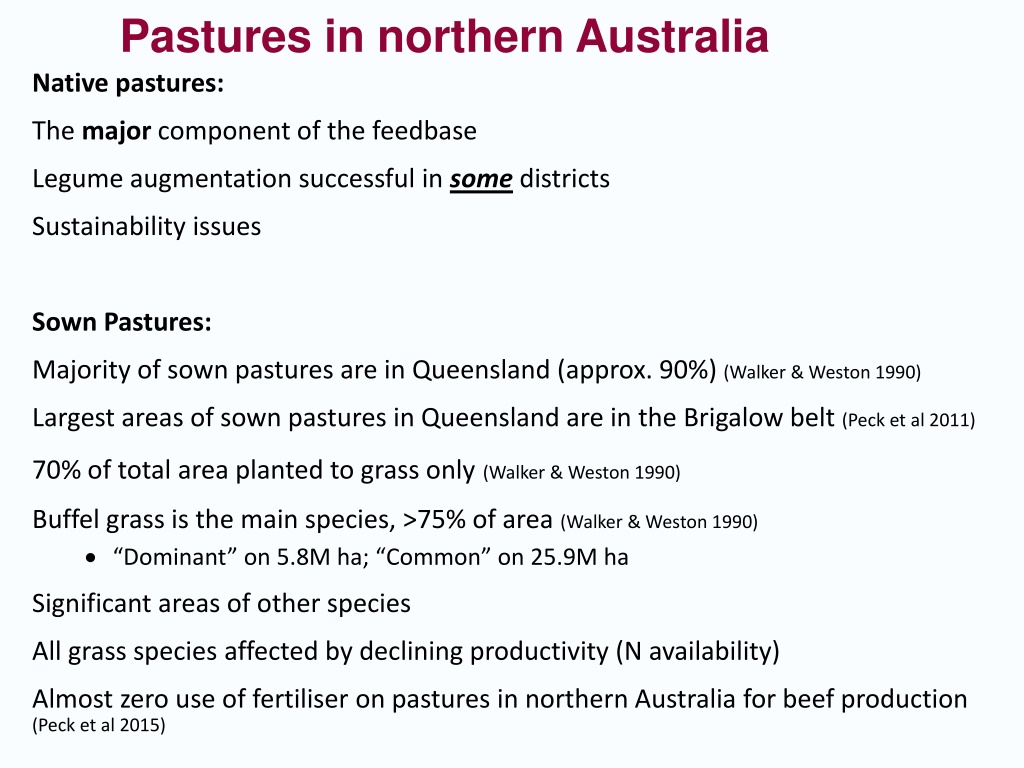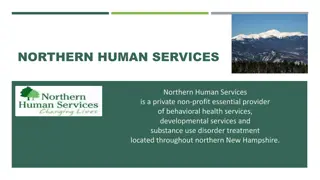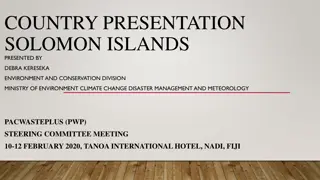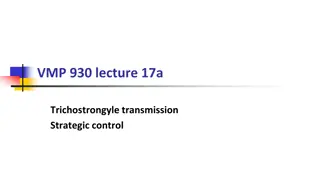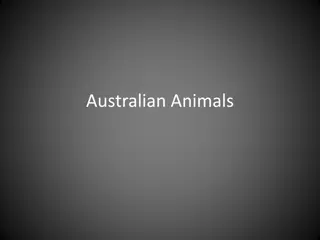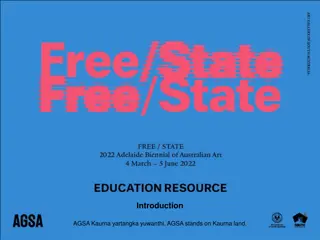Challenges and Priorities in Northern Australian Pasture Management
Pastures in northern Australia face issues with declining productivity, nutrient deficiencies, and inadequate use of fertilizers. Legume augmentation shows potential, but commercial adoption remains low. Focus areas include improving legume establishment, addressing nitrogen tie-up, and enhancing production from legumes. Research and policy priorities emphasize the use of existing technologies, reliable legume establishment, and understanding grass species for better pasture management.
Download Presentation

Please find below an Image/Link to download the presentation.
The content on the website is provided AS IS for your information and personal use only. It may not be sold, licensed, or shared on other websites without obtaining consent from the author. Download presentation by click this link. If you encounter any issues during the download, it is possible that the publisher has removed the file from their server.
E N D
Presentation Transcript
Pastures in northern Australia Native pastures: The major component of the feedbase Legume augmentation successful in some districts Sustainability issues Sown Pastures: Majority of sown pastures are in Queensland (approx. 90%) (Walker & Weston 1990) Largest areas of sown pastures in Queensland are in the Brigalow belt (Peck et al 2011) 70% of total area planted to grass only (Walker & Weston 1990) Buffel grass is the main species, >75% of area (Walker & Weston 1990) Dominant on 5.8M ha; Common on 25.9M ha Significant areas of other species All grass species affected by declining productivity (N availability) Almost zero use of fertiliser on pastures in northern Australia for beef production (Peck et al 2015)
Productivity decline: N tie-up Urea strip: Productivity has declined by ~50% due to decreased nitrogen availability Almost zero use of fertiliser on pastures in northern Australia RD&E results: Legumes are the best option to improve productivity but successful commercial adoption is low
Permanent pasture big issues Grass only pastures Pasture rundown low N availability Legumes are the most promising option to improve productivity but commercial results have been mixed more failures than success! Low successful adoption Adapted legumes Persistence and productivity Establishment Poor agronomy Seed quality and supply Rhizobia Nutrition
Short term pasture big issues Nutrient deficiency and soil structure issues for pasture Declining Soil Organic Matter under cropping Nutrient deficiency, especially P & S increasing in area Rapid establishment Agronomy Seed quality Species that come up from depth
RDE & policy priorities 1. Improved use of existing mitigation technologies & practices 2. Reliable establishment of legumes and rhizobia Fallowing, sowing and seed bed impacts, herbicide tolerance, rhizobium inoculation, 3. Improved production from legumes Nutrition (especially P & S), rhizobium effectiveness, grazing management, N fixation rates 4. Legume adaptation Adaptation limits and relative productivity of different legumes (including the context of climate change); targeted evaluation for better varieties 5. Legume (& grass) seed supply Apparent market failure good quality seed regularly not available 6. Understanding buffel and other sown grasses Geographic extent, condition and productivity Physiology, genetics, productivity and digestibility Peck et al 2011
Legume evaluation priorities Priority environments 1. Competitive grass pastures on clay soils in subtropical inland (i.e. Brigalow Belt); especially frosty areas (southern Qld and northern NSW) 2. Coastal hinterland (700-1000mm AAR) 3. Clay soils in north Qld, NT, WA 4. Better lighter soils (sand, loam, light clays & duplex) in inland subtropics where sown grasses are common 5. More robust ley legumes Potential for improvements on current varieties - Desmanthus biomass production, soil type adaptation, cold tolerance - Stylosanthes - cold tolerance, disease tolerance, rhizobia specificity - Macroptillium? Aeschynomene? Clitoria? Bell et al 2016
